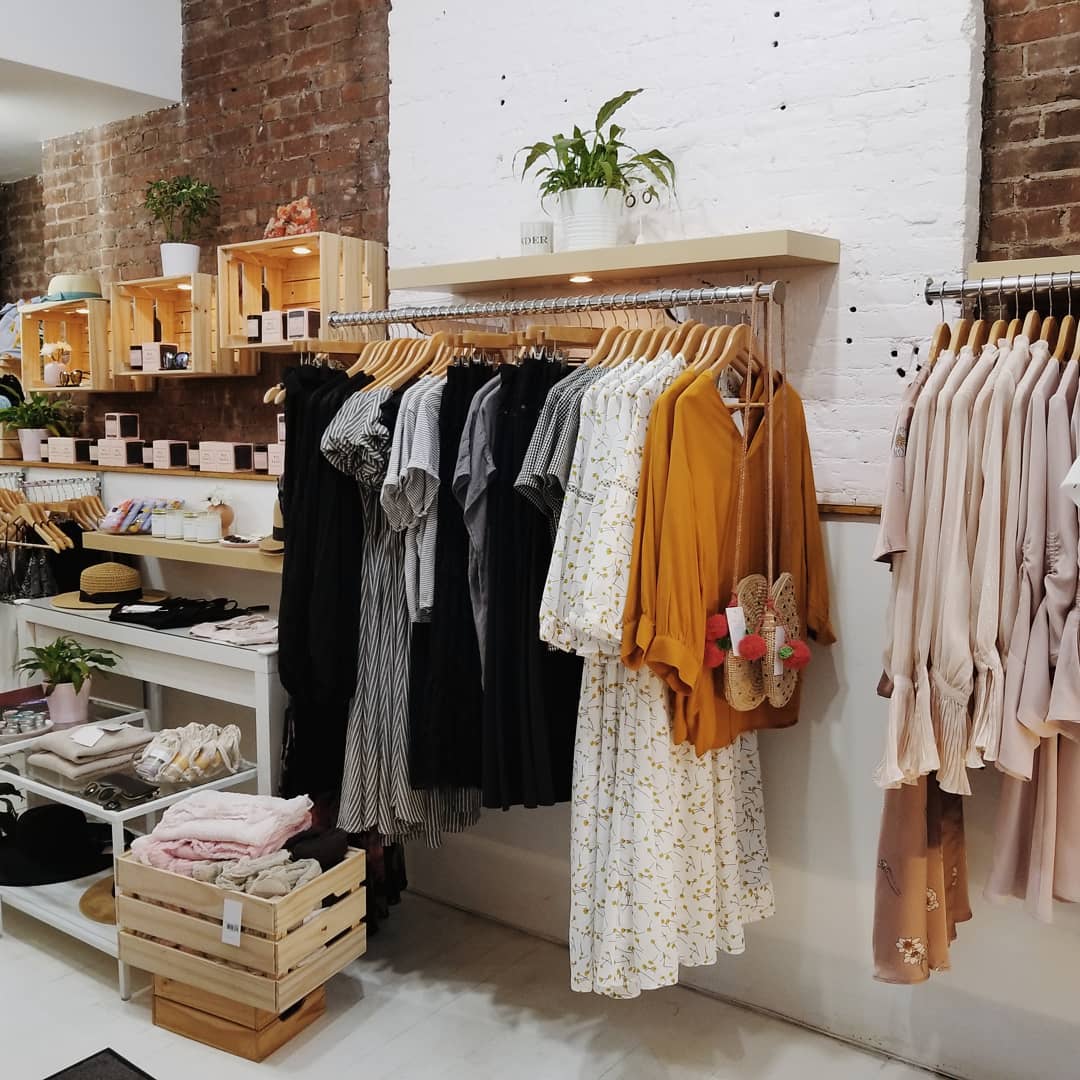Leading 10 Must-Have Item from Your Favorite Boutique Fashion Shops
Leading 10 Must-Have Item from Your Favorite Boutique Fashion Shops
Blog Article
Checking Out the Evolution and Influence of Apparel on Modern Fashion Trends
The advancement of garments has actually substantially influenced modern fashion fads, combining historic precedents with cutting-edge innovations. Legendary numbers like Coco Chanel and Yves Saint Laurent reinvented the fashion industry by presenting ideas that prioritize comfort and access, which proceed to resonate today.
Historical Style Influencers
In the tapestry of style history, particular figures have actually left an enduring mark, forming the patterns and designs that specify whole ages. Coco Chanel, an advanced designer, redefined ladies's fashion by introducing comfy, elegant apparel that departed from restrictive bodices.
Elsa Schiaparelli is one more pivotal number, renowned for her avant-garde layouts that incorporated surrealist art, working together with Salvador Dalí to develop whimsical pieces that tested conventional appearances. Her innovative use shade and bold patterns reverberates in modern style. Yves Saint Laurent, meanwhile, democratized haute couture with prêt-à-porter collections, bringing path designs to the masses and setting a precedent for contemporary ready-to-wear lines.
These dreamers, amongst others, not only transformed fashion in their times however additionally established enduring trends that resonate in today's fashion business, giving a foundation upon which modern designers continue to introduce and develop. Their heritages emphasize the importance of creativity and daring in vogue's ever-evolving narrative.
Technological Developments in Fashion
Amidst the dynamic landscape of the apparel industry, technological developments stand at the forefront of development, reshaping how designers create and customers involve with style. The assimilation of 3D printing has actually reinvented style processes, allowing designers to experiment with complex frameworks and lasting products that were previously inconceivable. This technology facilitates quick prototyping, lowering waste and quickening production times.

Smart textiles, installing technology into materials, are likewise transforming the market. Developments like self-cleaning and temperature-regulating materials supply enhanced performance and convenience. Wearable technology, integrating attributes like fitness tracking and interaction, includes a brand-new dimension to fashion, merging appearances with functionality.
Cultural Shifts and Style
As technological advancements remain to reshape the garment industry, cultural shifts are equally influential, redefining style and customer choices. Over the last few years, the surge of social media sites systems has actually increased the circulation of international style patterns, enabling diverse cultural influences to merge and exist side-by-side. This electronic interconnectivity has helped with the rapid exchange of ideas, leading to an extra diverse and comprehensive analysis of design that shows the multifaceted nature of modern culture.
Social understanding and appreciation have actually motivated designers to draw ideas from a more comprehensive spectrum of historic and ethnic contexts, incorporating conventional motifs with modern looks. This combination has caused fashion that resonates with a broader audience, advertising a feeling of identity and belonging throughout different demographics. In addition, the boosting demand for customization has driven brand names to use customizable alternatives, allowing customers to reveal individuality while showing their cultural heritage.
Additionally, shifting social values have actually impacted style, with inclusivity and diversity ending up being central styles. The industry has started to embrace versions and influencers of various physique, ethnicities, and sex identities, difficult standard charm criteria. This change emphasizes the power of social shifts fit the future of style, as style comes to be a more authentic expression of individual and collective identification.
Sustainability and Modern Design
While the style sector remains to progress, the important for sustainability has actually come to be increasingly urgent, affecting modern-day design methods. This change intends to address environmental worries and moral considerations, leading to a reevaluation of conventional manufacturing approaches. Developers are now integrating sustainable products, such as natural cotton, recycled polyester, and naturally degradable textiles, right into their collections, lowering the eco-friendly footprint of fashion. The surge of slow-moving style, which highlights high quality over quantity, encourages customers to purchase classic pieces rather than transient trends.
In addition, contemporary design is identified by its development in minimizing waste and advertising circularity. This method not just alleviates environmental influence but additionally improves the social responsibility of fashion residences.

Future Trends in vogue

Sustainability will proceed to be a driving force in shaping future style patterns. The industry is significantly embracing environmentally friendly products and honest manufacturing techniques, reacting to an expanding consumer demand for liable techniques. Advancements such as bio-fabricated materials and closed-loop recycling systems are readied to redefine how garments is produced and taken in, reducing environmental influence while maintaining design and quality.
Cultural shifts, consisting of the surge of inclusivity and diversity, will certainly also play an essential role. As society becomes more familiar with social concerns, fashion is expected to come to be a system for expression and change. Developers will likely concentrate on creating collections that show a more comprehensive variety of experiences and identifications, promoting representation and availability.
Verdict
The evolution of garments dramatically impacts contemporary style fads, where historic impacts merge with contemporary designs. Secret figures like Coco Chanel and Yves Saint Laurent have redefined style, while technological advancements such as 3D printing and clever fabrics get redirected here expand creative possibilities. Cultural shifts towards inclusivity and sustainability force brands to take on moral techniques and embrace diversity. This ongoing evolution underscores fashion's role as a mirror to societal worths and technical advancement, suggesting a future rich with advancement and inclusivity.
The evolution of clothing has actually dramatically affected contemporary fashion trends, combining historic precedents with cutting-edge technologies.Among the dynamic landscape of the fashion sector, technological improvements stand at the center of advancement, reshaping how developers produce and customers involve with fashion.While the style market proceeds to progress, the necessary for sustainability has become significantly urgent, affecting contemporary layout methods. As check these guys out sustainability becomes ingrained in modern layout, it paves the means for a more aware and accountable style market.
The advancement of clothes significantly affects modern-day fashion fads, where historical impacts combine with contemporary layouts.
Report this page